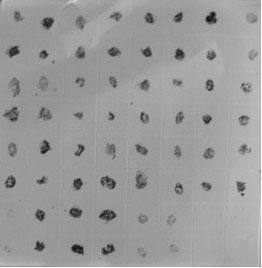Hybridoma cell strain capable of secreting tomato yellow leaf curl virus monoclonal antibody and application of monoclonal antibody
A technology for tomato yellowing leaves and hybridoma cell lines, which is applied in the directions of antiviral immunoglobulins, analytical materials, biochemical equipment and methods, etc., and can solve the problems of low efficiency and difficult to achieve effective control effects.
- Summary
- Abstract
- Description
- Claims
- Application Information
AI Technical Summary
Problems solved by technology
Method used
Image
Examples
Embodiment Construction
[0010] The hybridoma cell line secreting anti-tomato yellow leaf curl virus monoclonal antibody was deposited on November 28, 2011 in the General Microbiology Center of China Microbiology Culture Collection Committee, Institute of Microbiology, Chinese Academy of Sciences, and the preservation number is CGMCC No.5538 , which secretes monoclonal antibodies against tomato yellow leaf curl virus.
[0011] The monoclonal antibody against tomato yellow leaf curl virus secreted by hybridoma cell line ascites indirect ELISA titer reaches 10 -6 Above, the type and subclass of the antibody are IgG1 and kappa chain, and the monoclonal antibody can have a specific immunological binding reaction with the coat protein subunit of tomato yellow leaf curl virus.
[0012] The application of monoclonal antibodies against tomato yellow leaf curl virus in the detection of this virus is a variety of immunological detection methods and immunological kits established with monoclonal antibodies as th...
PUM
 Login to View More
Login to View More Abstract
Description
Claims
Application Information
 Login to View More
Login to View More - R&D
- Intellectual Property
- Life Sciences
- Materials
- Tech Scout
- Unparalleled Data Quality
- Higher Quality Content
- 60% Fewer Hallucinations
Browse by: Latest US Patents, China's latest patents, Technical Efficacy Thesaurus, Application Domain, Technology Topic, Popular Technical Reports.
© 2025 PatSnap. All rights reserved.Legal|Privacy policy|Modern Slavery Act Transparency Statement|Sitemap|About US| Contact US: help@patsnap.com


